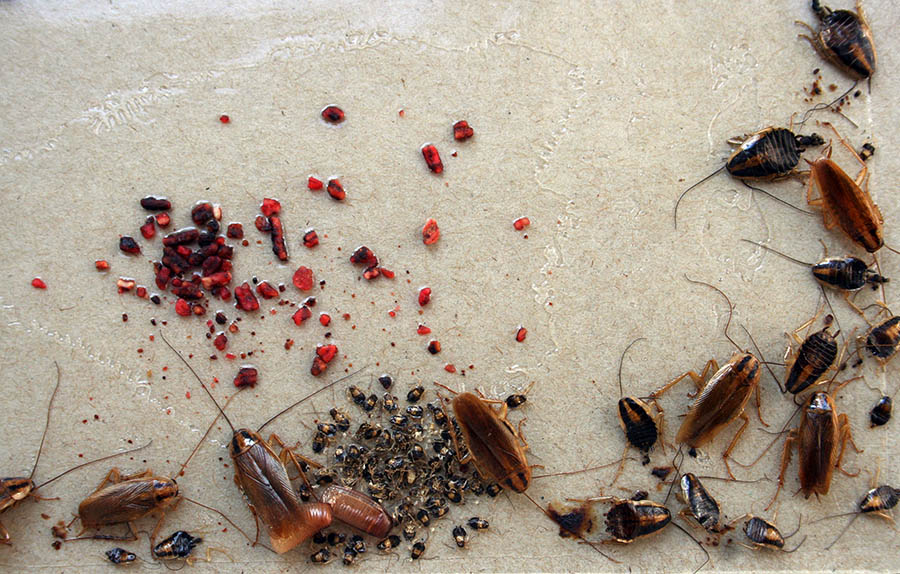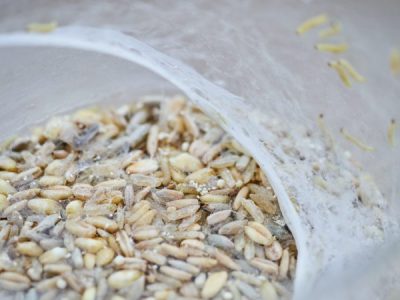You know the feeling. It’s the height of summer and you can’t enjoy being outside without being attacked by mosquitoes. Or it’s the dead of winter but you’ve got an infestation of mice in the attic keeping you up at night. Pests never seem to take a holiday or care about the season. The truth is, for many pests, their life cycles are intricately tied to the seasons and the environment around them. If you want to gain the upper hand in the battle against pests, you need to understand these life cycles and how the seasons influence them. Only then can you figure out the optimal timing for control and eradication. This article will explore the fascinating world of pest life cycles and show you why for effective pest management, timing really is everything.
The Lifecycle of Common Household Pests
Pests like flies, mosquitoes, and cockroaches have their breeding cycle in spring so they are out in full force during summer when temperatures rise and food seems especially fragrant.
Life Cycles in the Summer
In warm summer weather, the life cycle of these pests accelerates. The egg, larval, pupal, and adult stages progress rapidly, allowing populations to explode. Female mosquitoes require access to standing water to lay eggs, while cockroaches prefer dark, damp crevices. Within a week or two, larvae hatch and feed voraciously.
After pupating for a few days, adult insects emerge with one goal: mate and reproduce. A single female fly can lay up to 500 eggs in a four day period, while a mosquito may produce up to 1,000! Cockroaches are also prolific breeders, with females depositing egg cases containing up to 50 eggs several times a year. When each of these eggs hit sexual maturity after a few weeks, it only takes basic maths to imagine how infestations start.
The summer season is all about growth for these pests. By understanding their life cycles during this time, we can implement targeted pest control measures for maximum effect. Eliminating breeding sites, improving sanitation, using insecticides and repellents, and practising exclusion techniques are all useful strategies to help curb populations when conditions are most favourable for reproduction. With vigilant monitoring and an integrated approach, we can gain the upper hand even as the temperatures climb.
Breeding Seasons: When Pests Reproduce and Multiply
When it comes to controlling pests, timing is everything. Why? Because pests are most active and damaging during their breeding seasons.
The Life Cycle of Pests
Pests go through a series of stages in their life cycle – egg, larva (grub or caterpillar), pupa (cocoon) and adult (beetle, moth or fly). During the larval and adult stages, pests feed, mate and lay eggs. This is when they cause the most damage to crops and gardens.
By understanding the pest life cycle and knowing when each stage occurs, you can implement control methods that specifically target the most vulnerable life stages. For example, apply insecticides when larvae or grubs are most active, or set up pheromone traps during peak adult mating seasons.
Synchronising your pest control with the seasonal cycles of common pests in your area is key to staying on top of infestations. Do some research on the types of pests you usually deal with to determine when they are most likely to become a nuisance. Then schedule regular monitoring, trapping or spraying during those periods to get the upper hand.
Staying one step ahead of pests and disrupting their breeding patterns is the best way to win the war against these seasonal invaders. With the right timing and targeted control methods, you can overcome any pest problem.
Egg-Laying and Hatching: Understanding Pest Reproductive Stages
Egg-Laying and Hatching: Understanding Pest Reproductive Stages
The life cycle of pests involves egg laying and hatching, which are critical to understand for effective control. Female pests will mate and lay eggs, which then hatch into larvae or nymphs before developing into adults.
The number of eggs a female can lay depends on the species but can range from 10 to over 1,000. The more eggs laid, the greater the potential for an infestation if left uncontrolled. Eggs are often laid in hidden, protected areas like cracks, crevices, soil, under bark or leaves.
After hatching, larvae ( caterpillars, grubs) or nymphs (aphids, scale) feed and develop into adults. The time it takes for this transformation, known as the generation time, can be days to months, depending on factors like temperature, humidity, and availability of food.
Knowing when and where egg laying and hatching occurs for different pests helps determine the optimal time to implement control measures. Treatments applied during egg laying and hatching, such as pesticides or natural predators, can eliminate a population before it becomes established. Cultural controls like sanitation, habitat modification, and exclusion techniques should also be prioritised at this stage.
Pest Activity Fluctuations: How Seasons Impact Infestations
The life cycle of pests directly impacts the severity of infestations throughout the year. As the seasons change, so do pest populations and activity levels. Understanding how the weather influences pest behaviour can help you better time treatments for maximum effectiveness.
Spring awakening
As the weather warms in spring, pests become active again after overwintering. This is when populations start to rapidly increase, as insects mate and lay eggs. Expect to see more pests like aphids, spider mites, whiteflies and thrips during this season. Spring is a critical time for prevention and early control before populations explode.
Summer swelter
Hot summer weather is ideal for pests like mosquitoes, fleas, cockroaches and rodents. Stable warm temperatures and rainfall create the perfect environment for these pests to thrive. Monitor for signs of activity and be proactive with control measures during summer to avoid severe infestations. Use repellents, eliminate access to food sources and shelter, and treat with pesticides if needed.
Autumn anticipation
As days shorten in fall, pests prepare for winter by increasing feeding and egg laying. Colder weather also drives some pests indoors in search of shelter and food. Expect a final population surge before pests become dormant for winter. Fall is the last chance for control before pests over winter, so take action to eliminate access points, food sources and standing water where pests can breed. Treat if necessary to avoid issues continuing into next season.
Timing is everything when it comes to effective pest control. Understanding how seasonal changes drive pest behaviour and population growth will help you stay one step ahead. Take the appropriate actions in each season to minimise damage from these seasonal squatters.
Winter worries
Pest problems don’t go away in winter, they just get quiet. During the colder months, pests are shelter and food-focused, and guess which place has plenty of both? Your home. Though many homeowners feel like they’re battling with pests less in winter, the truth is pests are just waiting to come out in force when things warm up. Because of this, winter is actually the best time to call a pest control expert to ensure your problems are gone for good while population numbers dwindle. If you think your pest problems just went away, you have another thing coming when the bugs get in the mood again.
Timing Pest Control Strategies Based on Pest Lifecycles
To effectively control pests, you need to understand their life cycles and time your interventions accordingly.
Know When They’re Most Vulnerable
Target pests during stages when they’re most sensitive to control methods. For example, apply insecticides when larvae or nymphs are actively feeding, or use baits when adults are mating and egg-laying.
Certain pests like aphids, spider mites, and mealybugs reproduce very quickly, so frequent monitoring and control is key. Check plants regularly, especially the undersides of leaves, for signs of infestation. At the first sight of pests, implement control measures immediately to avoid population explosions that are difficult to manage.
Conversely, some pests like scale, thrips, and whiteflies have slower life cycles. Time controls to coincide with the crawler stage after eggs have hatched but before the pests develop protective shells. The crawlers are more susceptible to sprays since they have not yet developed a waxy coating.
For pests with multiple generations per year like mosquitoes, fleas, and cockroaches, sustained control efforts will be needed throughout the active season to break the breeding cycle. Use a combination of methods like source reduction, biological controls, and pesticides for the most effective long-term management.
In short, learn the life cycle and habits of your target pests. Monitor regularly, especially during critical life stages. Then time your interventions for maximum impact to gain the upper hand in the ongoing battle against pests. Staying one step ahead of them is key!
Breeding Cycle of Rats
Rats are prolific breeders, with a breeding cycle that allows populations to explode rapidly if left uncontrolled.
Breeding Cycle
Female rats, known as does, can breed year-round, going into heat every 4 to 5 days. Once mated, gestation lasts around 21 to 23 days, and a single litter can consist of 6 to 12 pups. The babies, called kittens or pups, open their eyes after about 2 weeks and are weaned by their mother around 4 weeks of age.
At 6 to 8 weeks, the young rats are ready to leave the nest, breed, and start the cycle over again. This short generational period means that two rats can produce over 1,500 descendants within a year if reproduction is unchecked.
The breeding cycle of rats is a crucial factor to consider in any pest control strategy. Understanding their rapid reproduction allows you to time interventions for maximum effect. Targeting rats during breeding or nesting season, or when kittens have just left the nest, can help curb population growth over the long term.
Reproductive cycle of Cockroaches
The reproductive cycle of cockroaches is a critical component of their success as pests. Understanding how cockroaches reproduce can help in controlling populations.
Egg Production
Female cockroaches, produce egg capsules that contain multiple eggs, known as egg cases or oothecae. A single ootheca can contain up to 50 eggs for some species. Females produce multiple oothecae over their lifetime, dropping them off in sheltered locations like cracks and crevices. The oothecae are purse-shaped and contain eggs that are initially white but darken as the nymphs inside develop.
Hatching
Nymphs hatch from the oothecae in 6 to 8 weeks. The nymphs are initially pale but darken in colour as their exoskeleton hardens. Nymphs moult several times over 6 to 12 months before becoming adults. The period from egg laying to adulthood is known as the “life cycle” and understanding the timeline can help in targeting control methods.
Mating
Adult cockroaches mate frequently, with males locating females through pheromone cues. A single mating results in fertilisation for multiple oothecae. Females continue producing oothecae for the remainder of their lifespan, which can be over a year for some species. The frequent mating and egg production, combined with the large number of eggs in each ootheca, allow populations to grow rapidly without control.
Knowing how and when cockroaches reproduce is key to effective control through methods such as targeted baiting and residual insecticide sprays. Timing treatments around hatching and development of nymphs can help break the cycle and gain control of infestations. Understanding the reproductive habits of cockroaches helps turn their success into their downfall.
Reproductive Cycle of Fleas
The flea life cycle consists of four stages: egg, larva, pupa, and adult. Understanding the flea reproductive cycle is key to effective control and prevention.
Eggs
An adult flea can lay up to 50 eggs per day which hatch into larvae in 2-3 days. The tiny white eggs fall off the host animal into the environment, carpeting, bedding, cracks and crevices. Because eggs can remain dormant for months, frequent vacuuming, washing of bedding, and treatment of yards is required.
Larvae
The larvae, resemble tiny white worms, feed on organic debris for 5-11 days before pupating. Larvae are susceptible to insect growth regulators which disrupt their development into adults. IGR’s are often used in combination with adulticides for the most effective control.
Pupa
The pupa, resembling a cocoon, is the transition stage between larva and adult. Pupae can remain dormant for weeks to months until the right conditions trigger emergence as an adult. This is why year-round control is needed.
Adults
Adult fleas feed on the blood of dogs, cats, and humans. Females begin laying eggs within 24-48 hours of their first blood meal, starting the cycle over again. Adulticides, such as topical or oral medication, should be used to kill adults and prevent reproduction.
By understanding the flea life cycle and reproductive habits, you can implement an integrated pest management plan to eliminate infestations and prevent future outbreaks. Timing is everything when it comes to effective control. Staying one step ahead of these seasonal pests is key.
Reproductive Cycle of Termites
Termites have a complex life cycle with several stages of development. Their reproductive cycle begins in the spring when alates, the winged reproductive termites, emerge from the colony. After mating, the male alates die and the females shed their wings and search for a suitable location to start a new colony.
Once an acceptable spot is found, the queen begins laying eggs. These hatch into larvae, which moult several times before pupating. The pupae then develop into juveniles called nymphs. Nymphs continue to moult and develop into workers, soldiers, and future reproductives.
The queen can lay up to 100 eggs in the first 24 hours and will continue laying eggs for the next 10 to 30 years. This results in an exponential growth of the colony. At its peak, a single colony may contain up to 5 million individuals.
Understanding the reproductive cycle of termites, including when and where they swarm, mate and establish new colonies, provides critical insight into managing these wood-destroying pests. Timing treatments to coincide with certain stages of development, such as swarming or egg laying, will produce the best results. Knowledge about their intricate life cycle is key to gaining the upper hand against these clever insects.
So there you have it. The pest control war is an ongoing effort, but luckily Cure-All Pest Control loves putting up the good fight. Our team of pest pros have an intricate knowledge of pest lifecycles and know exactly when to bring the hammer down. If you want to ensure your Brisbane home remains pest-free, contact us today for a full inspection.




